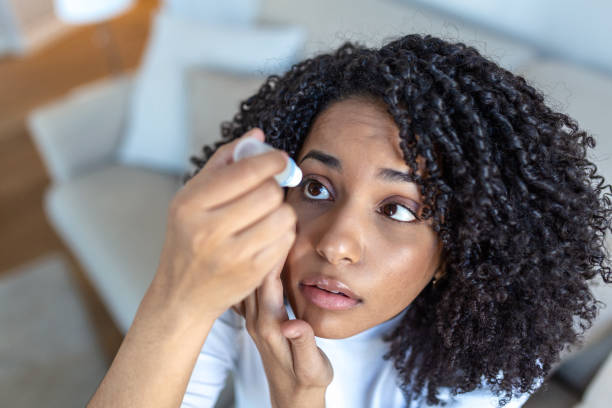Glaucoma is a serious eye condition that can lead to irreversible vision loss if not detected early. Often referred to as the “silent thief of sight,” it progresses slowly and without noticeable symptoms, making regular eye checkups crucial for early detection and management.
What is Glaucoma?
Glaucoma is a group of eye conditions that damage the optic nerve, which is essential for good vision. This damage is often caused by abnormally high pressure in your eye (intraocular pressure). The optic nerve transmits visual information from the eye to the brain, and any damage to this nerve can result in vision loss or blindness
Symptoms to Watch For
Glaucoma progresses slowly, so symptoms may not be noticeable until significant damage has occurred. Early detection through regular eye exams is the best way to protect your vision. Here are some symptoms to be aware of:
- Patchy Blind Spots: These occur in your side (peripheral) or central vision, often in both eyes.

- Tunnel Vision: In advanced stages of the disease.
- Severe Headache: Especially if it is sudden and accompanied by other symptoms.
- Eye Pain: Persistent or recurring.
- Nausea and Vomiting: Often linked with severe eye pain.
- Blurred Vision: Especially if it occurs suddenly.
- Halos Around Lights: Seeing rings around lights.
- Eye Redness: Persistent redness in one or both eyes.
If you experience any of these symptoms, it’s crucial to see an eye doctor immediately.
Risk Factors
Certain factors can increase the risk of developing glaucoma:
- Age: People over 60 are at higher risk, although glaucoma can occur at any age.
- Family History: If glaucoma runs in your family, you are more likely to develop it.
- Medical Conditions: Diabetes, heart disease, high blood pressure, and sickle cell anemia increase the risk.
Eye Conditions: Severe eye injuries, eye surgeries, and conditions like high myopia (nearsightedness) can also increase the risk.
- Ethnicity: People of African, Asian, and Hispanic descent are at higher risk.
- Prolonged Use of Corticosteroid Medications: Especially when applied to the eyes.
Prevention and Management

While glaucoma damage can’t be reversed, treatment and regular checkups can help slow or prevent vision loss, especially if you catch the disease in its early stages. Here are some key management strategies:
- Regular Eye Exams: Comprehensive eye exams can detect glaucoma early before significant damage occurs. It’s recommended to have a baseline eye screening at age 40, and regular follow-ups as advised by your doctor.
- Prescription Eye Drops: These are often the first line of treatment to reduce eye pressure. They work by decreasing the production of fluid within the eye or increasing its outflow.
- Oral Medications: These can help reduce eye pressure by improving fluid drainage or decreasing fluid production.
- Laser Treatment: Laser therapy can help open blocked drainage channels within the eye, allowing fluid to drain more effectively.
- Surgery: Surgical options include creating a new drainage path for fluid or improving existing drainage to lower eye pressure.
Living with Glaucoma
Managing glaucoma involves more than just medical treatments; it also requires lifestyle adjustments and proactive measures to protect your vision:
- Adhere to Treatment Plans: Follow your doctor’s recommendations and take prescribed medications consistently.
- Monitor Your Vision: Be aware of any changes in your vision and report them to your doctor immediately.
- Protect Your Eyes: Wear protective eyewear when engaging in activities that could result in eye injury.
- Healthy Lifestyle: Maintain a healthy diet, regular exercise, and avoid smoking to support overall eye health.
- Stress Management: Stress can affect your eye pressure, so practice stress-reducing techniques such as yoga, meditation, and deep breathing exercises.


